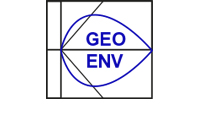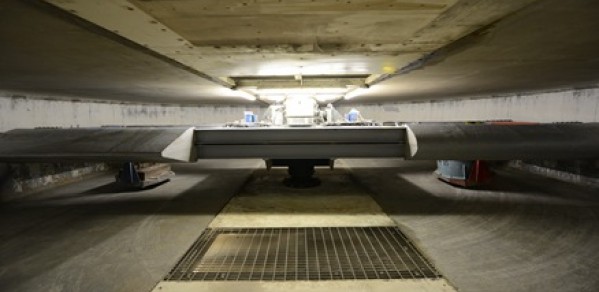Centrifuge at University of Cambridge
The Schofield Centre is part of the Department of Engineering at University of Cambridge. It is housed at a separate site in the western part of Cambridge about 3 miles from the main department and is part of the Centre for Construction Process modelling. The Schofield Centre is a world-leading research centre for centrifuge modelling with 4 academics, 5 dedicated technical staff and offers training to about 30 PhD students and international visitors on various projects at any given time.
The Schofield centre houses the 10 m diameter Turner beam centrifuge. This machine is 150 g-ton machine and can carry payloads of up to 1 tonne. It is routinely used to test soil-structure systems like buildings with pile foundations, retaining walls etc. at the correct prototype stresses and strains. To model earthquake loading specialist actuators are mounted on the centrifuge swings that deliver strong earthquake input motions to the model soil-structure systems.
At present there are two earthquake actuators, one a purely mechanical earthquake actuator called the Stored Angular Momentum (SAM) actuator and a second, more recently added Servo- Hydraulic earthquake actuator. SAM actuator can apply powerful, sinusoidal shaking motions at g levels of up to 100g. The peak dynamic force that this actuator can produce is about 100 kN. Servo-hydraulic earthquake actuator can apply realistic earthquake motions like Kobe motion or Northridge motion to the models being tested and can operate at g levels of up to 80g. This actuator can also create a dynamic force of 100 kN and can operate in the frequency range of 10~200 Hz (noting frequency scales with the g level at which the model is being tested).
The data acquisition is carried out using on-board computers that were developed to function in the high gravity environment. It is possible to log up to 60 channels of data in any given test at a sample frequency of 10 kHz. Miniature instrumentation is used in each test such as MEMS accelerometers, miniature PPT’s to measure pore pressure and LVDT’s/Laser non-contact displacement measurement devices. Further, high speed cameras with 2 MPixel resolution and a frame rate of 1000 frames per second are also available to obtain high resolution images to carry out Particle Image Velocimetry.
Access will also be given to the model preparation of the soil samples using the computer controlled automatic sand pouring system and the CAM-SAT system that will allow soil samples to be saturated with high viscosity pore fluids under computer controlled mass flux.
Services currently offered by the infrastructure: The core activities of the Schofield Centre are: fundamental and applied research into geotechnical engineering problems including those in the field of geotechnical earthquake engineering, with a view to develop a deep understanding of the seismic behaviour of soil-structure systems, to improve existing practices in design as well as in risk estimation, evaluation of risk mitigation methods; scientific and technological consultancy, at both national and international levels; training for academicians, practitioners and technicians.



